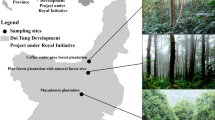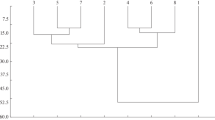Abstract
This chapter describes the studies made on the small mammalian fauna of the eastern hilly zone of the state, considering the paucity of the information on the subject. Since almost all the patches of land have been converted into crop field, the small mammalian diversity has undergone a series of changes and species replacements. Four study zones viz., crop fields and hilly tracks of Abu Hills, main Aravallis, southern Rajasthan, and southeastern Rajasthan were selected for the present study. The flora of every zone has also been mentioned in the text. Trapping of small mammals in every small field was done for almost seven years at a stretch. Out of the 15 species of small mammalian fauna found in the study areas, the insectivorous House Shrew is the most abundant species. Abu Hills have 12 species of rodents, while the southern part has eight species. Absence of Cutch Rock-rat in southeastern Rajasthan is surprising. The diversity of Aravalli has been greatly altered during the last decade possibly due to the impact of irrigation by Indira Gandhi irrigation canal. In search of shelter in upland bushes, small mammals have started moving toward the Thar which has resulted in increased diversity of destructive rodent species in the area. Other pressures faced by these animals have also been discussed.
Access this chapter
Tax calculation will be finalised at checkout
Purchases are for personal use only
Similar content being viewed by others
References
Krishnan MS (1968) Geology of India and Burma. Higginbottoms Pvt Ltd, Madras, 536
Prakash I, Singh H (2001) Composition and species diversity of small mammals in the hilly tracts of Southeastern Rajasthan. Trop Ecol 42(1):25–33
Ryley KV (1913) BNHS’ mammal survey of India, Burma and Ceylon. Report Nos. 9-14. J Bomb Nat Hist Soc. 22:283–295, 464–513, 684–725
Hardy BS (1977) The langurs of Abu: Female and male strategies of reproduction. Harward University Press, Cambridge, 361
Prakash I, Saravanan A, Singh P (1995) Change in the abundance of small mammals on the Aravallis range due to irrigated agriculture. Proc Nat Acad Sci. 65(B)(I):47–52
Cainfield RH (1994) Application of interpret method in sampling vegetation. J For 39:388–394
Jackson WB (1952) Population of wood mouse (Peromyscus leucopus) subjected to the application of DDT and parathion. Ecol Mongr 22:259–281
Margalef FR (1958) Information theory in ecology. Gen Syst 3:36–71
Singh H (1999) Ecology of small mammals in the hilly tract of south and southeastern Rajasthan. PhD Thesis (Unpublished). Jainarain Vyas University, Jodhpur
Muddappa D, Kumar A, Cellam R (2001) Abundance and habitat selection of the Malabar spiny dormouse in rain forests of the southern Western Ghats, India. Curr Sci 80(3):424–427
Prakash I, Singh P, Saravanan A (1995) Niche alteration by the Cutch rock-rat, Cremnomys cutchicus in the Aravallis. J Bomb Nat Hist Soc 92(2):259
Prakash I (1995) Invasion of Peninsular small mammals towards the Aravalli ranges and the Thar desert. Intl J Ecol Env Sci 21:17–24
Prakash I, Singh P (1999) Species composition, relative abundance and altitudinal distribution of small mammals in the Aravalli mountain range. Intl J Ecol Env Sci 25:37–49
Acknowledgement
We are grateful to Late Prof. Ishwar Prakash for imparting training to us in the field of rodentology and ecology. Financial support from DST, Govt. of India, is gratefully acknowledged. Mr. Gulab Prasad, Mr. Rajender Chauhan, Mr. Kailash Chouhan, forest officials of Rajasthan state government and staff members of DRS, and Zoological Survey of India, Jodhpur, greatly helped during the course of study. Help extended by all of them is gratefully acknowledged.
Author information
Authors and Affiliations
Corresponding author
Editor information
Editors and Affiliations
Rights and permissions
Copyright information
© 2013 Springer International Publishing Switzerland
About this chapter
Cite this chapter
Singh, H., Singh, P., Sharma, B.K. (2013). Impact of Altered Land Use Pattern on Small Mammalian Diversity of Hilly Tracts of Rajasthan, India. In: Sharma, B., Kulshreshtha, S., Rahmani, A. (eds) Faunal Heritage of Rajasthan, India. Springer, Cham. https://doi.org/10.1007/978-3-319-01345-9_3
Download citation
DOI: https://doi.org/10.1007/978-3-319-01345-9_3
Published:
Publisher Name: Springer, Cham
Print ISBN: 978-3-319-01344-2
Online ISBN: 978-3-319-01345-9
eBook Packages: Biomedical and Life SciencesBiomedical and Life Sciences (R0)




